AI is leading a new scientific revolution
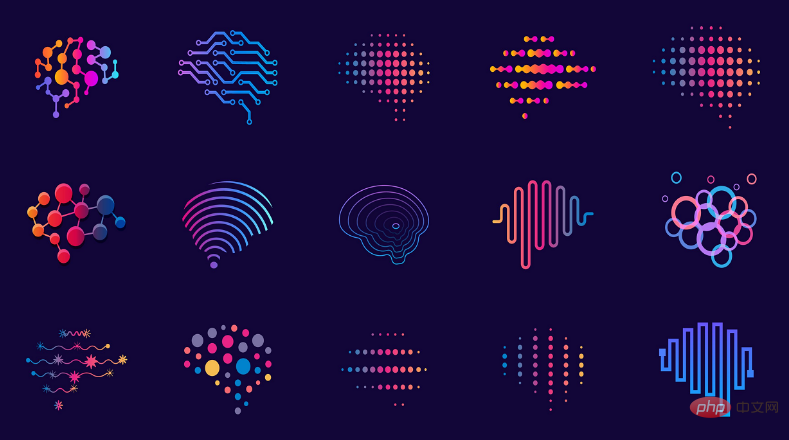
This article is reproduced from Lei Feng.com. If you need to reprint, please go to the official website of Lei Feng.com to apply for authorization.
Since the discovery of DNA in the 1950s, biologists have tried to link the length of genetic sequences to a range of cellular components and protein synthesis processes, including, for example, for the now-famous mRNA vaccines Assists the mRNA transcription process of specific antibodies.
Although progress has been made in sequencing and understanding genomes since the discovery of DNA, an important link is still missing. Biologists lacked a method to accurately and efficiently predict the three-dimensional shape of an unknown protein using only its DNA or RNA source sequence. In biology, structure determines function. The role of a protein in a cell depends on its form. The hollow cylindrical structure facilitates the formation of good membrane receptors, while U-shaped enzymes catalyze chemical reactions in the fjord-like cavity. Being able to predict and even design protein structures would be a leap forward in understanding human disease and could unlock new treatments for a range of diseases.
But for more than 70 years, scientists have used slow methods that overwhelmed computers and relied largely on their own guesswork to tease out the structures of proteins. Although biologists knew the length of the DNA code for every amino acid that makes up every protein, they lacked a repeatable, generalizable formula to solve what's known as the "protein folding problem." They need to systematically understand how any string of amino acids, once connected, folds into a three-dimensional shape to unravel the vast universe of proteins.
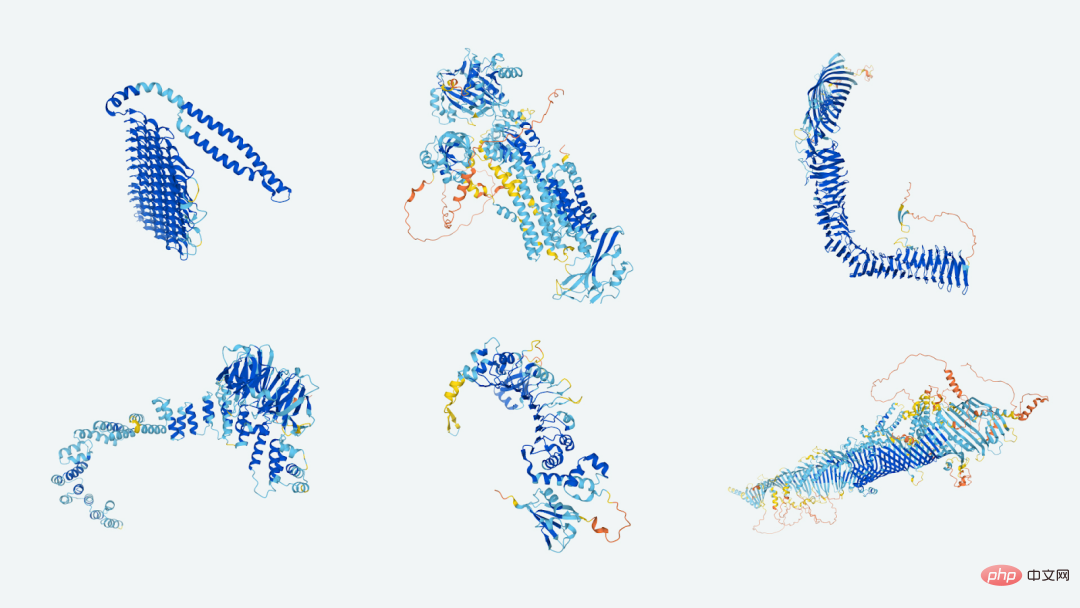
Source: DeepMind
In 2020, Google’s artificial intelligence team DeepMind announced that its algorithm AlphaFold solves the protein folding problem.
At first, most people were excited about this amazing breakthrough, and scientists were ready to test this new tool, which also sparked some interest. Isn't this the same company that launched AlphaGo a few years ago, allowing it to defeat the world champion in the Chinese strategy game Go? Mastering a game more complex than chess, while difficult, feels trivial compared to the problem of protein folding.
But AlphaFold has proven its scientific mettle with an annual competition in which teams of biologists guess the structure of a protein based solely on its genetic sequence. The algorithm far outperformed human competitors, posting scores that predicted the final shape to within one angstrom (the width of a single atom). Soon after, AlphaFold passed its first real-world test, correctly predicting the shape of the SARS-CoV-2 "spike" protein, the virus' apparent membrane receptor for targeting vaccines.
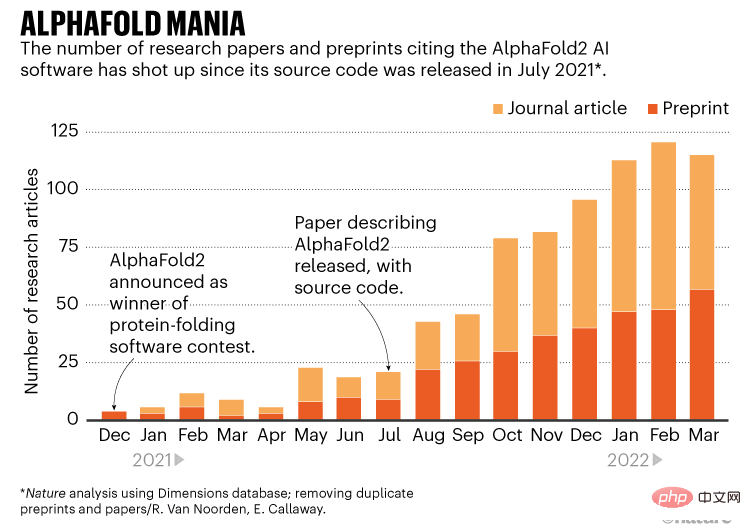
Source: "Nature"
AlphaFold's success soon Becoming impossible to ignore, scientists began trialling the algorithm in the lab. In 2021, Science magazine crowned the open source version of AlphaFold the "Best Method of the Year." Biochemist and Science editor-in-chief H. Holden Thorp wrote in an editorial: "Breakthroughs in protein folding are among the greatest breakthroughs ever in terms of scientific achievement and future research."
Today, AlphaFold’s predictions are so accurate that after more than 70 years of thinking, the protein folding problem is considered to have been solved. While the protein folding problem may be the most high-profile achievement of AI in science to date, AI is quietly making new discoveries in many scientific fields.
AI is also changing the way scientific research is done by accelerating the discovery process and providing scientists with new investigative tools.
This technology upgrades research pillars such as microscopes and genome sequencers, adding new technical capabilities to the instruments and making them even more powerful. AI-driven drug design and gravitational wave detectors give scientists new tools to probe and control the natural world.
Beyond the laboratory, AI can also deploy advanced simulation and inference systems to develop real-world models and use them to test hypotheses. With the widespread impact of scientific methods, AI is triggering a scientific revolution through breakthrough discoveries, new technologies and enhanced tools, as well as automated methods that increase the speed and accuracy of scientific processes.

Source: AI-Assisted Super-Resolution Cosmology Simulation
In addition to protein folding problems, AI discoveries in many fields, from cosmology and chemistry to semiconductor design and materials science, have demonstrated its scientific value.
For example, a team at DeepMind designed another algorithm to calculate the electron density of a molecule, beating the shortcut method that scientists had relied on for 60 years. Knowing the electron density of a given molecule goes a long way toward understanding the physical and chemical properties of a material. But because electrons are governed by quantum mechanics, calculating the density of a specific electron requires complex equations that quickly turn into a computational nightmare. Instead, the scientists used the average density of electrons in the material as a guide, sidestepping difficult quantum calculations. However, DeepMind's algorithm directly addresses the quantum aspects of the problem and has been shown to be more accurate than shortcut methods.
Similar to the protein folding problem, AI can surpass the methods scientists have used for decades and unlock new ways to accurately predict physical and chemical properties.
AI’s impact on science extends beyond the technology’s new discoveries in four key ways.
First of all, AI can quickly read scientific literature to understand the basic rules, facts and equations of science, and help scientists manage the large number of papers and data flooding various fields. In 2020 alone, between 100,000 and 180,000 scientific journal articles were published about COVID-19.
While it makes sense for researchers to focus on something as pressing as the ongoing global pandemic, papers on COVID-19 account for only the largest total number of articles in the largest biomedical databases About 4-6%. The tidal wave of papers and data produced is far beyond the ability of any scientist to read, leaving researchers unable to truly keep up with the pace of innovation in their fields.
This is where AI comes in.
For example, in the field of medicinal chemistry, Insilico is entering Phase I clinical trials of a drug entirely designed by AI to treat a type of disease called idiopathic pulmonary fibrosis. (IPF) disease. Insilico’s algorithms select disease targets by reading medical literature to find potential proteins, cells or pathogens to pinpoint. Once a target is selected, the algorithm can design a treatment to treat the disease. Insilico has developed an end-to-end AI platform for drug discovery that automatically keeps up with the latest results and data in the field so scientists can stay informed without becoming overwhelmed.
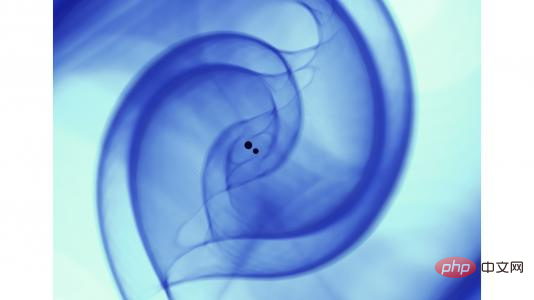
Source: Image provided by the Leadership Computing Facilities, Visualization and Data Analysis Group, Argonne National Laboratory
Secondly, as instruments become more sophisticated and exploration of natural mysteries becomes deeper, scientists need to face massive amounts of data. AI can also play a role in this aspect.
A team of scientists at Argonne National Laboratory (ANL) has developed an algorithm that can understand gravitational waves, the space-time continuum predicted by Einstein Ripples in the structure, but were not discovered until 2015. The algorithm processed a month's worth of data in 7 minutes, providing an accelerated, scalable and repeatable method for detecting gravitational waves. And the algorithm also runs on standard graphics processing units (GPUs), eliminating the need for researchers to use specialized equipment to collect and interpret gravitational wave data.
Ian Foster, Head of Data Science and Learning (DSL) at ANL, said: “I’m really excited about this project, which shows how AI methods can be integrated naturally with the right tools. Into the workflow of scientists, allowing them to complete their work faster and better, enhancing rather than replacing human intelligence.” With the help of artificial intelligence, what was once a massive amount of data has now become a controllable flow of information that accelerates the pace of scientific development.
Third, AI has been quietly upgrading some of the lab’s long-standing mainstays: microscopes and DNA sequencers.
At ANL, researchers have found a way to increase the amount of information an electron microscope can retrieve about a sample, while increasing the instrument's resolution and sensitivity. Unlike the microscopes many people are familiar with from high school or college biology classes, electron microscopes do not rely on visible light to construct images. Instead, as the name suggests, they use electrons, which allows them to take images with higher resolution and finer structures than other microscopes.
Researchers at ANL have designed a method to use AI to record phase data on electron microscopes, which can deliver critical information about the physical and chemical properties of the sample, thereby improving the instrument's performance. Power and capacity.
Similarly, another upgrade in AI is found in so-called light field microscopy, which can capture high-definition 3D images of motion. It would normally take scientists days to reconstruct a video, but with AI, the time required to process high-resolution data from these movements is reduced to seconds without losing resolution or detail.
DNA sequencers are the workhorses of the genomic era, and they have also been enhanced by AI. Earlier this year, a team of scientists used AI to halve the time it takes to sequence DNA, and they hope to halve it again soon. In short, artificial intelligence is upgrading the most basic scientific tools.

Source: "Science"
Finally, AI is in the laboratory Where it really shines is in simulating complex systems, making it an increasingly standard tool in basic scientific research.
Last year, researchers demonstrated AI’s multidisciplinary capabilities by building groundbreaking simulation experiments in ten scientific fields, including physics, astronomy, geology and climate science.
All 10 simulators are trained by the same deep neural network called DENSE. Compared with other methods, the simulation speed is improved while maintaining accuracy. A billion times as much.
Crucially, simulators can be used to solve "inverse problems," where the researcher knows the outcome but wants to find out which variables cause the output. AI is good at this kind of calculation and can easily figure out the path to a specific answer.
While simulations are useful, researchers also want to make sure their models work in the real world. Two leading technology companies, Google and Samsung, have recently turned to AI to plan the layout of some of their chips.
Google concluded that the AI-designed chips “outperformed or were comparable to human-produced chips for all key metrics, including power consumption, performance, and chip area.” Comparable". Going a step further, the company is using AI to design its next-generation AI accelerator (TPUs are AI-made chips, rather than standard CPUs or GPUs).
Similarly, Samsung relied on AI chip design software to create Exynos, a chip used in wearable products and cars. With its high-fidelity simulations, AI provides scientists with a powerful tool that is revolutionizing the way they model and experiment with the natural world.
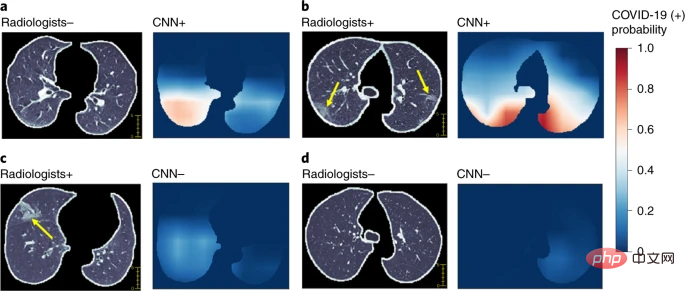
Source: AI supports rapid diagnosis of COVID-19 patients
There is no better real-world test for AI’s modeling capabilities than the COVID-19 pandemic.
First, the protein folding algorithm AlphaFold correctly predicted the important "spike" protein, demonstrating how AI can accelerate the development of vaccines or treatments in future pandemics. But perhaps even more impressively, in the summer of 2020, Japanese scientists used Fugaku, the world's most powerful supercomputer, to simulate the airborne spread of COVID-19.
Powered by deep neural networks and thousands of GPUs, Fugaku provided the world with conclusive evidence that the virus was airborne and convinced the WHO to change its guidelines for controlling COVID-19 accordingly (e.g., masks, ventilation, and risks of indoor versus outdoor activities). In the real world, AI is proving its value by informing global mitigation strategies during crises.
In addition to making new discoveries and adding new tools to the scientific arsenal, AI can discover patterns in data, make testable predictions, and use them to incorporate new evidence into its Model, reflecting the scientific method.
Philosopher Karl Popper popularized the idea that science advances by discarding falsifiable hypotheses that can be tested and proven wrong through experimentation, And this process of elimination through theory and experiment is a hallmark of the scientific method.
As some recent breakthroughs in AI have shown, the technology also generates hypotheses that can be tested experimentally and provides a rigorous and falsifiable answer through a process of elimination.
DeepMind’s electron density model beats researchers by approximating the scientific process and iterating feedback between predictions and experiments until a better grasp of quantum computing is achieved.
AI solves this problem by testing its model on thousands of experimentally determined proteins, refining guesses, and pruning the neural network by giving higher weight to branches closer to the solution. problem of protein folding. After researchers build an open-source version of AlphaFold, other scientists can use the model to unravel the mysteries of how RNA structures fold and proteins bind together.

Source: Independent SE(3) equivariant model with end-to-end rigid docking
Overall, understanding how proteins bind opens the door to powerful new drug development because many reactions in cells are the result of proteins working together. These two advancements usher in a new era of treatment design, leveraging end-to-end AI pipelines to localize disease and design precise treatments.
For example, a research team at Huawei’s Artificial Intelligence Laboratory used a version of this model to automatically generate antibodies against a target infection. From drug design to protein binding, AI’s ability to model, analyze and control the natural world will only continue to improve.
DeepMind’s latest breakthrough is applying AI to the problem of controlling and sustaining nuclear fusion reactions. AI successfully controlled the fusion reaction of hydrogen and helium, powering every star in the universe with record energy, and discovered new shapes that stabilize plasma. This experiment is an important step toward developing viable fusion energy that could provide enough renewable energy to power the world.
This case highlights the most promising application of AI in science: it sees patterns we cannot see and analyzes our environment from different but complementary perspectives. Collaborating with researchers and grounded in the scientific method, AI can solve the same exploratory questions using the iterative theory and experiments that underpin the scientific process.
Science can best be described as the exploration of the unknown. AI is a partner on this journey, perceiving the natural world and its unexplored parts differently than we do, opening up new ways to understand and harness the world's power.
As Sony Research Director Hiroaki Kitano describes it, scientific discovery is a "search" problem based on a self-correcting system of hypotheses, experiments and data that can be simulated by AI. But AI is more than a powerful tool in the hands of scientists and partners during the search process. The technology is also changing scientific processes, automating and increasing the tasks people can accomplish using it. Artificial intelligence is leading a new scientific revolution, making significant breakthroughs in many fields, opening up new avenues for scientific research, and accelerating the pace of scientific innovation. As a partner, AI will work with scientists to explore more endless scientific frontiers.
The above is the detailed content of AI is leading a new scientific revolution. For more information, please follow other related articles on the PHP Chinese website!

Hot AI Tools

Undresser.AI Undress
AI-powered app for creating realistic nude photos

AI Clothes Remover
Online AI tool for removing clothes from photos.

Undress AI Tool
Undress images for free

Clothoff.io
AI clothes remover

AI Hentai Generator
Generate AI Hentai for free.

Hot Article

Hot Tools

Notepad++7.3.1
Easy-to-use and free code editor

SublimeText3 Chinese version
Chinese version, very easy to use

Zend Studio 13.0.1
Powerful PHP integrated development environment

Dreamweaver CS6
Visual web development tools

SublimeText3 Mac version
God-level code editing software (SublimeText3)

Hot Topics
 How to use char array in C language
Apr 03, 2025 pm 03:24 PM
How to use char array in C language
Apr 03, 2025 pm 03:24 PM
The char array stores character sequences in C language and is declared as char array_name[size]. The access element is passed through the subscript operator, and the element ends with the null terminator '\0', which represents the end point of the string. The C language provides a variety of string manipulation functions, such as strlen(), strcpy(), strcat() and strcmp().
 Avoid errors caused by default in C switch statements
Apr 03, 2025 pm 03:45 PM
Avoid errors caused by default in C switch statements
Apr 03, 2025 pm 03:45 PM
A strategy to avoid errors caused by default in C switch statements: use enums instead of constants, limiting the value of the case statement to a valid member of the enum. Use fallthrough in the last case statement to let the program continue to execute the following code. For switch statements without fallthrough, always add a default statement for error handling or provide default behavior.
 The importance of default in switch case statement (C language)
Apr 03, 2025 pm 03:57 PM
The importance of default in switch case statement (C language)
Apr 03, 2025 pm 03:57 PM
The default statement is crucial in the switch case statement because it provides a default processing path that ensures that a block of code is executed when the variable value does not match any case statement. This prevents unexpected behavior or errors and enhances the robustness of the code.
 What are the types of return values of c language function? Summary of types of return values of c language function?
Apr 03, 2025 pm 11:18 PM
What are the types of return values of c language function? Summary of types of return values of c language function?
Apr 03, 2025 pm 11:18 PM
The return value types of C language function include int, float, double, char, void and pointer types. int is used to return integers, float and double are used to return floats, and char returns characters. void means that the function does not return any value. The pointer type returns the memory address, be careful to avoid memory leakage.结构体或联合体可返回多个相关数据。
 Concept of c language function
Apr 03, 2025 pm 10:09 PM
Concept of c language function
Apr 03, 2025 pm 10:09 PM
C language functions are reusable code blocks. They receive input, perform operations, and return results, which modularly improves reusability and reduces complexity. The internal mechanism of the function includes parameter passing, function execution, and return values. The entire process involves optimization such as function inline. A good function is written following the principle of single responsibility, small number of parameters, naming specifications, and error handling. Pointers combined with functions can achieve more powerful functions, such as modifying external variable values. Function pointers pass functions as parameters or store addresses, and are used to implement dynamic calls to functions. Understanding function features and techniques is the key to writing efficient, maintainable, and easy to understand C programs.
 What is the value range of char in C language
Apr 03, 2025 pm 03:39 PM
What is the value range of char in C language
Apr 03, 2025 pm 03:39 PM
The value range of char in C language depends on the implementation method: signed char: -128 to 127 Unsigned char: 0 to 255 The specific range is affected by computer architecture and compiler options. By default, char is set to a signed type.
 C# multi-threaded method to prevent jamming
Apr 03, 2025 pm 02:54 PM
C# multi-threaded method to prevent jamming
Apr 03, 2025 pm 02:54 PM
The following ways to avoid "stuck" multithreading in C#: avoid time-consuming operations on UI threads. Use Task and async/await to perform time-consuming operations asynchronously. Update the UI on the UI thread via Application.Current.Dispatcher.Invoke. Use the CancellationToken to control task cancellation. Make rational use of thread pools to avoid excessive creation of threads. Pay attention to code readability and maintainability, making it easy to debug. Logs are recorded in each thread for easy debugging.
 How to calculate c-subscript 3 subscript 5 c-subscript 3 subscript 5 algorithm tutorial
Apr 03, 2025 pm 10:33 PM
How to calculate c-subscript 3 subscript 5 c-subscript 3 subscript 5 algorithm tutorial
Apr 03, 2025 pm 10:33 PM
The calculation of C35 is essentially combinatorial mathematics, representing the number of combinations selected from 3 of 5 elements. The calculation formula is C53 = 5! / (3! * 2!), which can be directly calculated by loops to improve efficiency and avoid overflow. In addition, understanding the nature of combinations and mastering efficient calculation methods is crucial to solving many problems in the fields of probability statistics, cryptography, algorithm design, etc.






